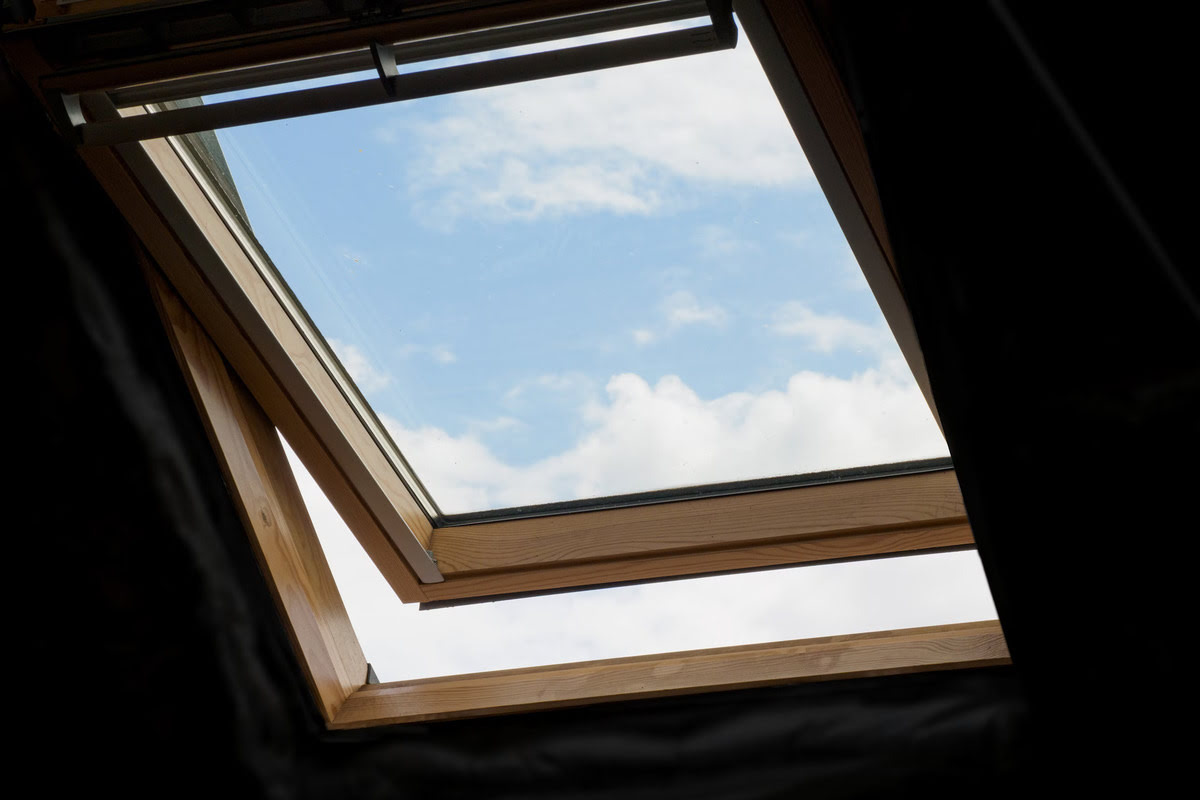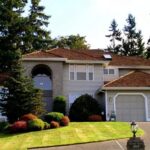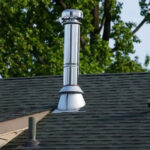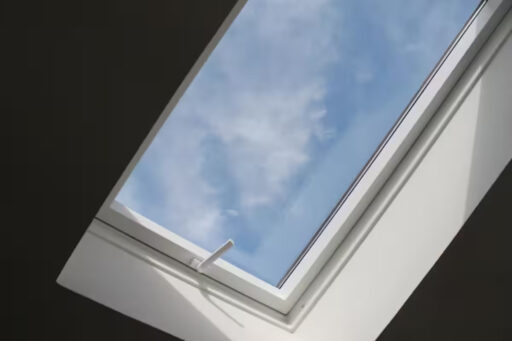Skylights are a fantastic addition to any home, offering natural light and a sense of openness. However, skylight leaking can turn that benefit into a costly headache. The main reasons for these leaks can vary from structural problems to issues with installation. Recognizing these problems early can save you time and money.
Why Skylights Leak?
Skylights are designed to provide beauty and functionality, but they can sometimes present challenges, particularly when it comes to leaks. A leaking skylight can cause significant damage, including stained ceilings, mould growth, and even structural issues if left unchecked.
Leaks often occur because of various factors, from weather exposure to improper installation. These elements can compromise the skylight’s ability to keep water out, leading to potential damage. Understanding the root causes of these leaks is the first step toward prevention.
Addressing skylight leaks promptly is essential. By understanding the causes and acting proactively, you can protect your home and extend the life of your skylight installation. Let’s explore the most common reasons skylights may begin to leak and how you can prevent them.
Cause #1: Damaged Flashing
Flashing is a crucial component of any skylight, serving as a barrier that directs water away from the roof and prevents leaks. When flashing becomes damaged, it loses its ability to protect your home effectively. This damage can occur due to weather conditions, aging, or improper installation.
To identify damaged flashing, look for signs such as rust, cracks, or separation from the roof surface. These indicators suggest that the flashing is no longer functioning correctly and may be allowing water to seep into your home. Regular inspection of the flashing is essential to catch these issues early.
Preventing flashing damage involves routine maintenance and timely repairs. Consider scheduling regular inspections by roofing professionals to ensure your flashing is in good condition. This proactive approach can help you avoid costly repairs and keep your skylight leak-free.

Cause #2: Poor Installation
Improper installation is one of the leading causes of skylight leaks. A skylight that is not installed correctly can leave gaps and weak points that allow water to enter. This issue is often the result of inexperienced installers or cutting corners during the installation process.
Signs of poor installation include visible gaps, uneven placement, or a lack of proper sealing. If you notice any of these issues, it’s essential to address them immediately. A professional assessment can determine whether the installation meets industry standards and identify any areas that require correction.
To prevent leaks due to poor installation, ensure you hire experienced professionals to install your skylight. Verify their credentials and ask for references to guarantee quality work. Investing in a proper installation can save you from future headaches and expenses related to leaks.
Cause #3: Cracks in the Skylight Lens
The skylight lens is the transparent part that allows light to enter your home. Over time, this component can develop cracks due to exposure to harsh weather conditions, debris impact, or natural wear and tear. Cracks in the lens compromise its ability to keep water out.
Detecting cracks in the skylight lens requires a thorough inspection. Look for visible lines or chips on the surface, which may indicate potential weak points. If left unaddressed, these cracks can expand and lead to significant leaks.
Preventive measures include regular cleaning and inspection of the skylight lens. Use gentle cleaning solutions to avoid further damage and check for cracks routinely. If you discover any damage, consider replacing the lens promptly to maintain your skylight’s integrity.
Cause #4: Condensation Misdiagnosed as Leaking
Condensation is often mistaken for a skylight leak, leading to unnecessary concerns and potential expenses. This phenomenon occurs when warm, moist air meets the cooler surface of the skylight, resulting in moisture buildup. While it may seem like a leak, it is a natural occurrence that can be managed.
To differentiate between condensation and leaks, inspect the skylight during dry weather. If moisture appears only when the indoor humidity is high, it’s likely condensation rather than a leak. Proper ventilation can help manage indoor humidity levels and minimize condensation.
Preventing excessive condensation involves ensuring adequate ventilation in your home. Installing exhaust fans or using dehumidifiers can help maintain balanced humidity levels. By addressing condensation, you can prevent potential damage and maintain a clear view through your skylight.
Cause #5: Clogged or Improper Drainage
Proper drainage is vital for preventing water accumulation around your skylight. When drainage systems become clogged or improperly installed, water can pool and eventually seep into your home. This issue is particularly prevalent in areas with heavy rainfall or snowfall.
Signs of clogged or improper drainage include water pooling around the skylight or visible debris blocking the drainage path. Regularly inspecting these areas can help you identify problems before they lead to leaks. Maintaining clean and functional drainage systems is essential for skylight longevity.
To prevent drainage issues, clear debris from gutters and drainage channels regularly. Ensure that your drainage systems are designed to handle local weather conditions effectively. Professional inspections can also help you identify and address any potential drainage problems before they cause leaks.

How to Prevent Skylight Leaks
Preventing skylight leaks requires a combination of regular maintenance, timely repairs, and professional assistance. By following these steps, you can ensure your skylight remains leak-free and continues to enhance your home.
- Regular Inspections: Schedule routine checks for your skylight and its components. Look for signs of damage, wear, or improper installation, and address these issues promptly.
- Professional Installation: Choose experienced professionals for skylight installation. Verify their credentials and ensure they follow industry standards to prevent future leaks.
- Timely Repairs: Address any signs of damage immediately, whether it’s a crack in the lens, damaged flashing, or clogged drainage. Quick action can prevent minor issues from becoming major problems.
- Proper Ventilation: Keep humidity under control to avoid condensation-related skylight leaking.
- Routine Maintenance: Clean gutters, drainage channels, and the skylight lens regularly to prevent blockages and damage.
With these preventive measures, you can protect your home from skylight leaks and enjoy the benefits of natural lighting without concerns.
When to Call a Roofing Professional
Knowing when to seek professional help is crucial for addressing skylight leaks effectively. While some issues can be managed with routine maintenance, others require the expertise of a roofing professional to ensure proper resolution.
Consider calling a professional if you notice persistent leaks, significant damage, or if you’re unsure about the cause of a leak. Roofing experts have the tools and knowledge to diagnose and fix complex issues, ensuring your skylight remains in top condition.
Routine professional inspections can also help you detect potential problems before they escalate. By partnering with a trusted roofing professional, you can ensure your skylight remains a valuable asset to your home, providing light and beauty without the worry of leaks.
Final Thoughts
Skylight leaks can cause significant damage to your home if not addressed promptly. Regular maintenance, timely repairs, and professional assistance are key to preventing skylight leaks. If you suspect your skylight is leaking or want a professional to take a look, contact us today for a free quote. We’ll inspect your skylight, identify the issue, and offer reliable solutions — so you can protect your home with confidence.
